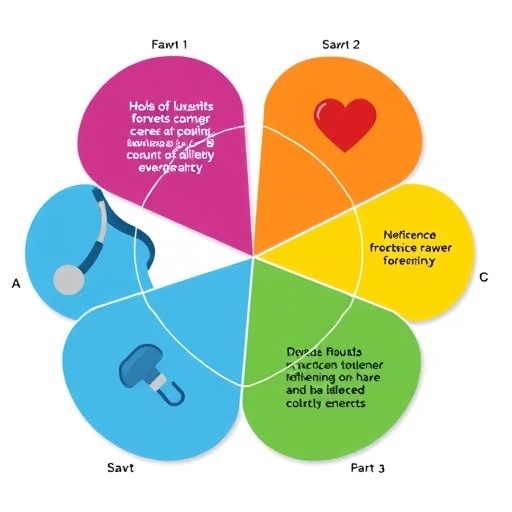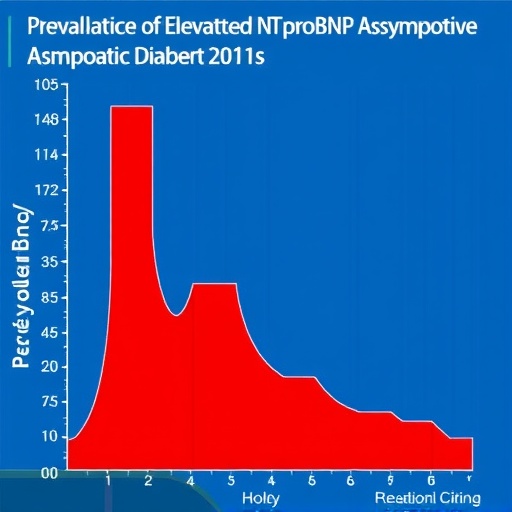In an extraordinary leap forward in the understanding of Huntington’s disease, a new study published in Nature Communications unveils revolutionary strategies to suppress somatic instability in the disorder by targeting the genetic sequences themselves. Huntington’s disease, a devastating neurodegenerative condition, is caused by the expansion of CAG trinucleotide repeats in the HTT gene, which progressively worsens due to somatic instability—the propensity of these repeats to further expand in various tissues over time. The newly reported research by Mathews, Coffey, Gärtner, and colleagues elucidates how transcriptional repression, coupled with direct binding to the expanded CAG repeats, can successfully mitigate this somatic instability. The findings not only pave the way for novel therapeutic interventions but also deepen our molecular understanding of repeat expansion disorders.
Huntington’s disease (HD) has remained a paramount challenge for decades, as the inexorable lengthening of CAG repeats in somatic cells accelerates disease progression and worsens patient outcomes. The phenomenon of somatic instability involves the expansion of these repeats beyond their inherited length, leading to exacerbated neurodegeneration. Until now, therapeutic strategies have focused largely on managing symptoms rather than addressing the driving genetic instability. The new study embarks on a direct assault on the molecular underpinnings of repeat instability—a daring and unprecedented approach.
At the heart of this research lies the dual strategy of transcriptional repression and direct binding to the pathogenic CAG repeats. Transcriptional repression refers to the silencing or downregulation of the gene’s activity, in this case, HTT, to reduce the harmful effects of its mutation. The team harnessed advanced molecular tools to selectively repress HTT transcription, effectively curbing the cellular processes that facilitate repeat expansion. Complementing this, they employed novel molecules capable of specifically binding to the elongated CAG repeat sequences. This binding stabilizes the DNA, thwarting the molecular mechanisms that would otherwise extend the repeat length.
The technical finesse underlying these methodologies is striking. The researchers utilized sophisticated nucleic acid-based compounds—engineered to latch onto the CAG repeats with high affinity—hindering the formation of DNA secondary structures known to promote instability. Moreover, they integrated transcriptional repression using precision gene regulation techniques such as CRISPR interference or epigenome editing to attenuate HTT expression without altering the genome sequence itself. This approach ensures targeted suppression while minimizing unintended consequences.
To validate their intervention, the scientists conducted extensive cellular and molecular assays that traced the behavior of CAG repeats under different treatment conditions. Markedly, cells treated with the combined strategy exhibited a substantial reduction in repeat expansions over time, demonstrating a robust suppression of somatic instability. These results, corroborated by biochemical analyses, highlight the therapeutic promise of this approach in slowing or potentially halting disease progression.
The implications of these findings are profound for Huntington’s disease management. By proactively stabilizing the CAG repeats and lowering HTT transcriptional output, the disease’s molecular trajectory can be altered at an early stage, delaying symptom onset and severity. This strategy may complement, or even surpass, existing therapies focused solely on symptom amelioration. Furthermore, it establishes a conceptual framework for addressing other repeat expansion disorders that share similar pathological mechanisms.
Critically, the study provides insights into the relationship between transcriptional activity and DNA repeat dynamics. The data suggest that active transcription of the expanded repeats fosters structural instability, while repression reduces the vulnerability to expansion. This nexus between gene expression and DNA stability opens new investigative avenues, challenging traditional notions and inviting a reevaluation of the molecular biology of repeat diseases.
From a clinical perspective, translating these findings into viable treatments poses both opportunities and challenges. Delivery methods for transcriptional repressors and repeat-binding molecules must be optimized for the human central nervous system’s intricacies. The blood-brain barrier, cellular specificity, and long-term safety profiles are among the critical factors requiring meticulous scrutiny. However, the molecular tools and delivery vehicles currently under development in the fields of gene therapy and RNA-based therapeutics offer hopeful pathways.
Moreover, the study’s approach of targeting the genetic cause rather than downstream effects represents a paradigm shift, aligning with precision medicine goals. It leverages detailed genetic and molecular knowledge to craft therapies tailored explicitly to the causative mutations. This specificity reduces off-target impacts and maximizes therapeutic efficacy.
Beyond Huntington’s disease, these insights into transcriptional repression and repeat binding may reshape our understanding of other repeat expansion disorders such as myotonic dystrophy, spinocerebellar ataxias, and fragile X syndrome. The molecular commonalities among these diseases suggest that similar therapeutic strategies could be employed to counteract somatic instability and consequent neurodegeneration.
The research also prompts fundamental questions about DNA dynamics—specifically how transcription and DNA structure coalesce to influence genetic stability. The study advances the concept that stabilizing DNA secondary structures formed by repeat sequences is a viable mechanism to impede expansion, a hypothesis that could have far-reaching consequences in genomics and molecular biology.
In the broader context of neurodegenerative diseases, the implications of controlling somatic mutation processes are monumental. Many such diseases are driven or exacerbated by genetic alterations accumulating over an individual’s lifetime. Intervening at the molecular source of these changes could revolutionize therapeutic strategies, shifting the focus from symptomatic management to genuine disease modification.
Ultimately, this groundbreaking work by Mathews, Coffey, Gärtner, and colleagues offers a beacon of hope for Huntington’s disease patients and families, embodying the culmination of years of research into the genetic and molecular roots of the disease. It exemplifies how intricate molecular targeting can disrupt pathological processes at their origin, ushering in a new era of gene-centric therapies.
As the scientific community digests these findings, forthcoming studies will undoubtedly build upon this foundation, exploring optimization, scalability, and integration with other therapeutic modalities. The future of Huntington’s disease treatment may be on the cusp of transformation, driven by the innovative intersection of transcriptional repression and molecular DNA binding techniques described in this remarkable study.
The promise of stabilizing the genome to halt neurodegeneration not only expands therapeutic prospects but also enriches the dialogue on how genetic regulation and DNA structure intersect in health and disease. This research boldly embraces complexity to chart a path toward tangible clinical outcomes, marking a milestone in molecular medicine.
Subject of Research: Huntington’s Disease Somatic Instability and Therapeutic Suppression via Transcriptional Repression and Direct CAG Repeat Binding
Article Title: Suppression of Huntington’s Disease Somatic Instability by Transcriptional Repression and Direct CAG Repeat Binding
Article References:
Mathews, E.W., Coffey, S.R., Gärtner, A. et al. Suppression of Huntington’s Disease Somatic Instability by Transcriptional Repression and Direct CAG Repeat Binding. Nat Commun 16, 10009 (2025). https://doi.org/10.1038/s41467-025-64936-4
Image Credits: AI Generated
DOI: https://doi.org/10.1038/s41467-025-64936-4
Tags: CAG repeat expansion therapygenetic treatments for Huntington’s diseaseHTT gene mutations and effectsHuntington’s disease researchmolecular mechanisms of repeat disordersneurodegenerative disease innovationsnovel interventions for genetic disorderssomatic instability in neurodegenerationtargeted gene therapy approachestherapeutic strategies for CAG repeatstranscriptional repression in geneticsunderstanding Huntington’s disease progression





